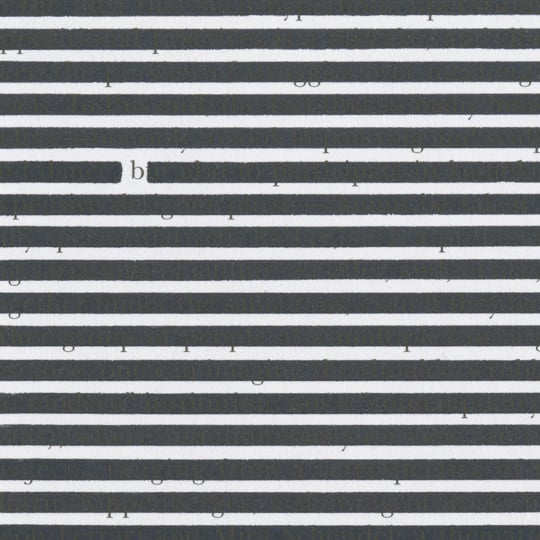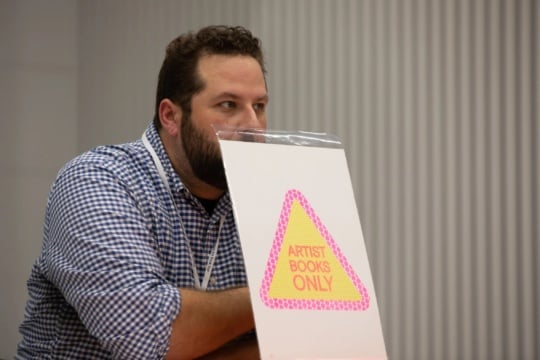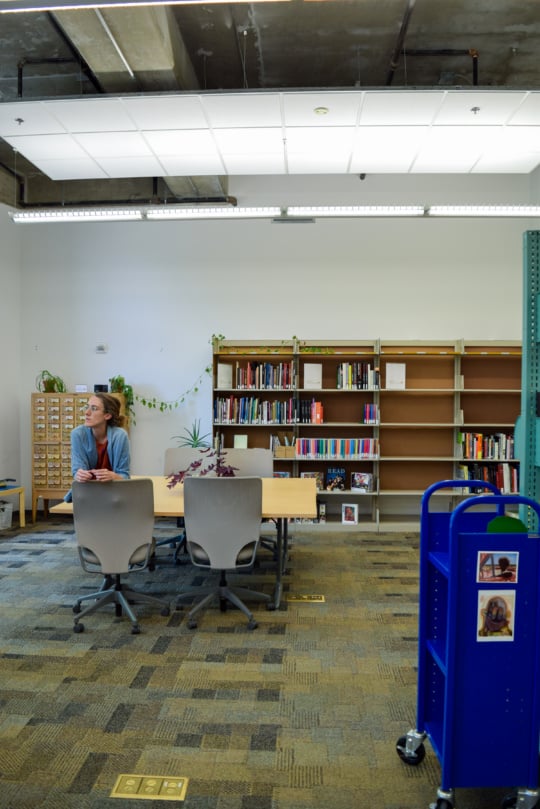
“Complicated Beauty: Contemporary Cuban Art” at the Tampa Museum of Art is perfectly positioned to build on that city’s strong historical connections with Cuba. From the Cuban Club to various monuments of José Martí, the famous Cuban poet and liberator, in historic Ybor City (founded in the 1880s by cigar manufacturers), to the multigenerational Cuban restaurants that have been feeding these longstanding relationships over the decades, Tampa has grown up with a Cuban accent.
On view through February 5, the exhibition is a joint project between the Tampa Museum of Art and the Bronx Museum of the Arts, and is intended to be the first of a series on Cuban art at the Tampa institution. Curators Seth Pevnick and Joanna Robotham set out to introduce viewers to a comprehensive look at current trends in Cuban contemporary art, and they approached the task by limiting the scope to 40 works by 25 artists. (A panel discussion with a few of the artists will be held at the museum on Jan. 17 at 7pm.)
Coming from a unique island nation, these artists share an experiential reality that unifies them as it sets them apart from many other artists around the world. The vast majority of the artists in this exhibition are graduates of the state-run Instituto Superior de Arte (ISA), founded in 1976, the one institution in Cuba of higher education dedicated to the arts. With the formal training they received at the ISA, many of these artists went on to gain international reputations—in part because they learned to use the art forms and concepts that are the language of the contemporary art world and more especially because they are talented. Their work has been exhibited around the world in solo and group exhibitions, and many pieces have been acquired by corporate and private collections.

The United States has stood alone in making access to Cuban art difficult and challenging, but in 1988 a chain of events changed things in an unexpected way; a painting by Manuel Mendive was purchased at a fundraising auction at the Cuban Museum of Art and Culture in Miami breaking an unwritten agreement that work produced by artists still living in Cuba should not be exhibited. Then those who purchased the piece took it down the street and ceremoniously burned it while the Cuban National Anthem played on a radio. Riots ensued. Eventually the Federal Courts got involved, and on September 18, 1989, in the case Cernuda versus the US Government, the ruling stated that the embargo laws could not be applied to the arts. After that, with the people-to-people policies of the Clinton administration, Cuban artists could come to the United States with their work for exhibitions.
Like many artists living in repressive societies, Cuban artists have embedded symbolism and veiled references into their works—which range in style and medium from hyperrealistic and abstract paintings to videos, installations, and mixed media pieces. This practice of embedding symbols is shared with contemporary artists around the world, but these Cuban artists are doing so because they are walking a fine line between the need to convey to the world what life in Cuba is like–the isolation, the dream of escape, the island’s natural beauty–and the imperative to avoid attracting the attention of government officials who might dole out punishment.
In the beginning of the 1980s the first graduates of the ISA felt fairly comfortable; they found it easy to get copies of magazines like ArtForum and Art in America from tourists, and they were able to have unofficial exhibitions in their homes. In 1980, Culture Minister Armando Hart even allowed an officially sanctioned show of conceptual art. But by the end of the decade, according to Peter Plagens, who was art critic for Newsweek, many of these artists were encouraged to move to Mexico.
Eduardo Ponjuán (b.1956), an important and influential artist, and one of the earliest graduates of the ISA (1983) in this exhibition, went on to become an ISA faculty member, mentoring many younger Cuban artists. In his striking painting Ripped Paper (2014), Ponjuán creates a tense relationship between color and form that sends a powerful message. Ripped Paper gives the appearance of a large piece of white paper with a tear in the center in the shape of Cuba. The hole reveals a red background that evokes an open wound.

The theme “de donde venga/where I come from” that José Bedia (b.1959) frequently explores in his art, is one way of dealing with the repercussions that come from being uprooted and has relevancy both for Cubans who left and for those who chose to stay in Cuba. In 1992, José Bedia left Cuba and began dividing his time between Mexico City and New York. Since 1993 he has been based in Miami. But well before he left Cuba, when he was in his early 20s, he started what was to become a remarkable life-long exhibition schedule with solo shows in Havana, Madrid, London, Mexico, Columbia, and New York City. As a young artist his name appeared on the roster for group shows in Europe, Canada, Australia, and again in New York City. His art is represented in private and corporate collections around the world.
Bedia’s involvement in the Afro-Cuban religion, Palo Monte is evident in his art. For more than 25 years he has traveled throughout northwestern Mexico to attend Semana Santa (Holy Week) ceremonies.Filled both with Christian and animistic symbols, Bedia’s painting Semana Santa is an interesting composition of overlapping stylized images divided up by the outlined edges of the larger figures. There is a tension between pattern and narrative. Christian churches and altars appear in the foreground and background, and a grouping of three crosses is repeated three times. The work is filled with desert plants and animals, and on the left there is a man with a conquistador helmet and tattoos of flowers on his arms, a curved knife in each hand. Conquistador helmets are repeated in a line leading up to the church. In the foreground next to the man’s tattooed arm, is a figure that looks to be part man, part animal with maracas in both hands. There are other figures with animal masks on their heads. This seems to be a piece that is recounting what happened over and over again in the New World: the Conquistadors showed up and took over both the land and the minds of the natives. The figures and symbols represent elements of deeply held belief systems from two cultures that have collided. Is this yet another way of examining the question “de donde venga?”
Mabel Poblet Pujol (b.1986) is considered to be one of Cuba’s most promising emerging artists. Her kinetic wall sculpture, Simplemente Bellas, is well known to regular visitors to the Tampa Museum because it usually hangs in the first floor lobby. This mixed-media piece consists of bicycle wheels filled with plastic flowers and leaves mounted on an acrylic panel that has the face of a woman painted on it. As a visitor approaches, the wheels are spun by a motor. This movement results in a continuous covering and uncovering of the face. The artist was inspired to make this piece after participating in a state-sponsored visit to the Women’s Prison in Holguin, Cuba, where she witnessed the inmates learning to make plastic flowers from recycled materials. The piece addresses themes of beauty, kitsch, mindless repetition, and the loss of oneself in one’s work.

In his 2011 series Libertad Condicional, Humberto Diaz (b. 1975) presents photographs of chairs chained to each other on residential patios. From patio to patio, the chairs range from cheap and flimsy made from webbed nylon to heavy wrought iron chairs placed in a manicured garden. The message seems to be “you can do what you want” (in this case leave your chairs outside), but you should be mindful of the consequences of your actions. In response to this caveat, the chairs have been chained together to secure them against theft, a reference to loss of liberty—symbolic of people chained to their circumstances and of the tensions between liberties and impositions to liberties.
Although the distance between Cuba and Florida is less than 100 miles, the distance for Cubans on either side of the Florida straits must also be measured in emotional terms brought about by separation, loss, being uprooted (for some), and having suffered broken hearts. Esterio Segura (b.1970) combines airplanes with other forms to explore and express these psychological wounds. Suspended from the ceiling, Goodbye My Love #7 is a red fiberglass airplane with a heart-shaped body. This symbolic flight of the heart signifies the pain of farewells, and of loss.

An outdoor piece by Segura, Hybrid of a Chrysler (2016), is a vintage Chrysler with a jet wing attached to the roof, a reference to the vintage automobiles that still travel the streets of Cuba — symbolic of the impact of U.S. sanctions on trade and travel — and the technology and advancement in the world beyond. Segura’s approach is emblematic of the subtle and symbolic references that Cuban artists so deftly employ.
What the future holds for American-Cuban relations and the possibility of a free exchange in the arts is only speculation. Even after the 1989 court ruling in Cernuda versus the US Government, during the George W. Bush administration, travel visas for artists were nearly impossible to obtain and payment to artists and importing of artwork became snarled in so much red tape that many gallerists gave up. Obama’s normalizing of relations with Cuba held great promise, though the incoming administration poses a distinct threat to such progress.

Meanwhile, in Cuba, it should be noted that on the evening that Fidel Castro died, well-known graffiti artist Danilo Maldonado Machado, or “El Sexto,” who was supposed to attend Art Basel Miami Beach, instead was beaten, arrested, and taken to jail in Cuba for his defiant chanting, “Abajo Fidel; abajo Raúl” (“Down with Fidel; down with Raúl.”).
“Complicated Beauty: Contemporary Cuban Art” is on view at the Tampa Museum of Art through February 5. A panel discussion with artists in the exhibition will be held at the museum on January 17 at 7pm (with a reception at 6:30). Noel Smith, curator of Latin America and Caribbean Art at the University of South Florida, will moderate this conversation with artists Esterio Segura, Mabel Poblet Pujol, and Glenda Leon.
Ann Gurley Rogers is a freelance writer and independent curator living in St. Petersburg, Florida. She has been writing about the arts since the mid-1990s.




